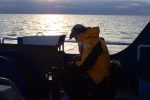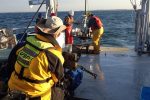
 The US Geological Survey's SEABOSS is loaded onto the Research Vessel Connecticut
The US Geological Survey's SEABOSS is loaded onto the Research Vessel Connecticut The sun rises over Long Island Sound
The sun rises over Long Island Sound Preparing to deploy the SEABed Observation and Sampling System (SEABOSS)
Preparing to deploy the SEABed Observation and Sampling System (SEABOSS) Preparing the control station for the launch of the SEABOSS
Preparing the control station for the launch of the SEABOSS Entering the locations of the planned sites into the vessel's navigation system
Entering the locations of the planned sites into the vessel's navigation system The dynamic positioning system on the RV Connecticut is essential for accurate site navigation
The dynamic positioning system on the RV Connecticut is essential for accurate site navigation Launching the SEABOSS at sunrise on the first day of operations
Launching the SEABOSS at sunrise on the first day of operations The vessel's first mate Frank mans the aft-looking navigation station during deployment
The vessel's first mate Frank mans the aft-looking navigation station during deployment USGS's Dann Blackwood controls the winch of the SEABOSS
USGS's Dann Blackwood controls the winch of the SEABOSS Principal Investigators Roman Zajac (U. of New Haven), Christian Conroy (UConn) and technicians Seth Ackerman (USGS) and Tyler Fountain (UMaine)
Principal Investigators Roman Zajac (U. of New Haven), Christian Conroy (UConn) and technicians Seth Ackerman (USGS) and Tyler Fountain (UMaine)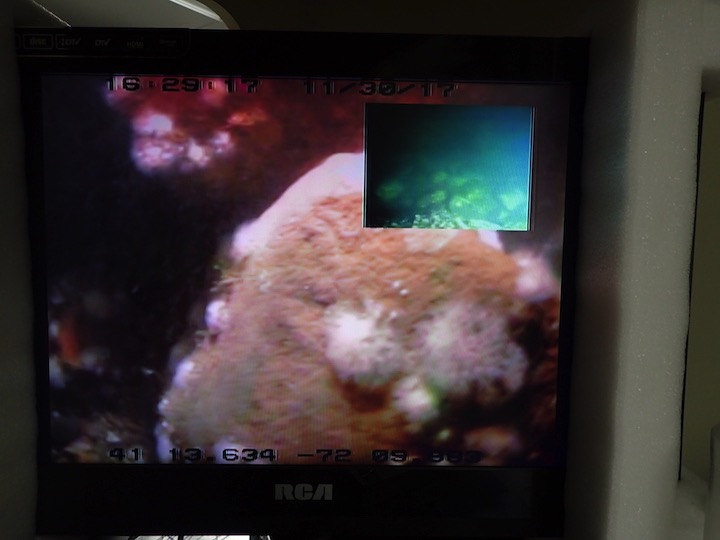 An additional viewing station of the two video feeds coming from SEABOSS
An additional viewing station of the two video feeds coming from SEABOSS The SEABOSS is recovered using a winch on board the RV Connecticut
The SEABOSS is recovered using a winch on board the RV Connecticut The SEABOSS collects sediments that are bagged for grain size analyses back in the lab
The SEABOSS collects sediments that are bagged for grain size analyses back in the lab The remainder of the sediments are sieved to collect all of the organisms that live within them
The remainder of the sediments are sieved to collect all of the organisms that live within them University of New Haven graduate students Courtney and Olivia sieving the sediments on the deck of the RV Connecticut
University of New Haven graduate students Courtney and Olivia sieving the sediments on the deck of the RV Connecticut PI Roman Zajac getting his hands dirty sieving the infaunal sediments
PI Roman Zajac getting his hands dirty sieving the infaunal sediments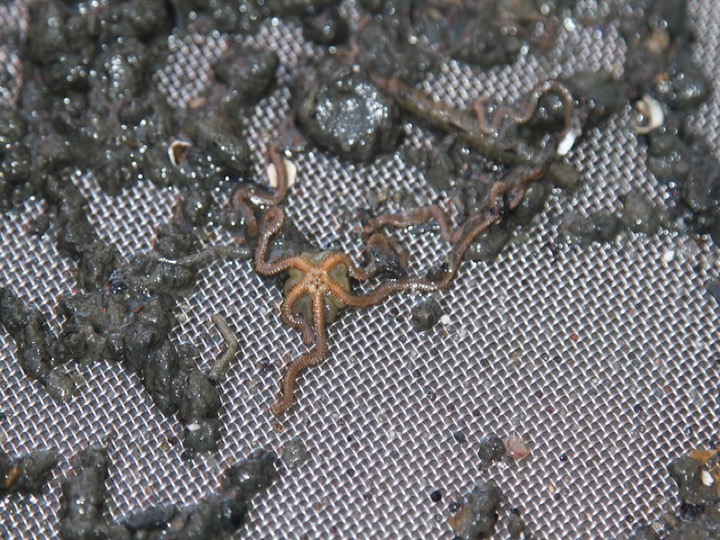 An ophiuroid, also called a brittle star, found during the sieving of the sediments
An ophiuroid, also called a brittle star, found during the sieving of the sediments The sieved infaunal samples are dyed and fixed then stored on deck
The sieved infaunal samples are dyed and fixed then stored on deck The science team standing by while the RV Connecticut moves to the next site
The science team standing by while the RV Connecticut moves to the next site The fast ferry on its way from Long Island to New London, Connecticut
The fast ferry on its way from Long Island to New London, Connecticut The operations continued into the early evening with the launch of the SEABOSS
The operations continued into the early evening with the launch of the SEABOSS The SEABOSS is recovered after its last deployment of the day
The SEABOSS is recovered after its last deployment of the day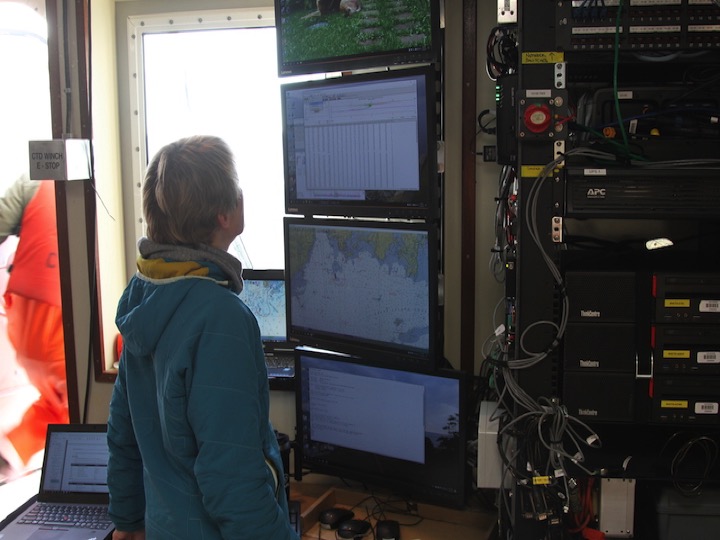 Technician Kay Howard-Strobel prepares to conduct Acoustic Doppler Current Profile surveys from the RV Connecticut during the evening hours
Technician Kay Howard-Strobel prepares to conduct Acoustic Doppler Current Profile surveys from the RV Connecticut during the evening hours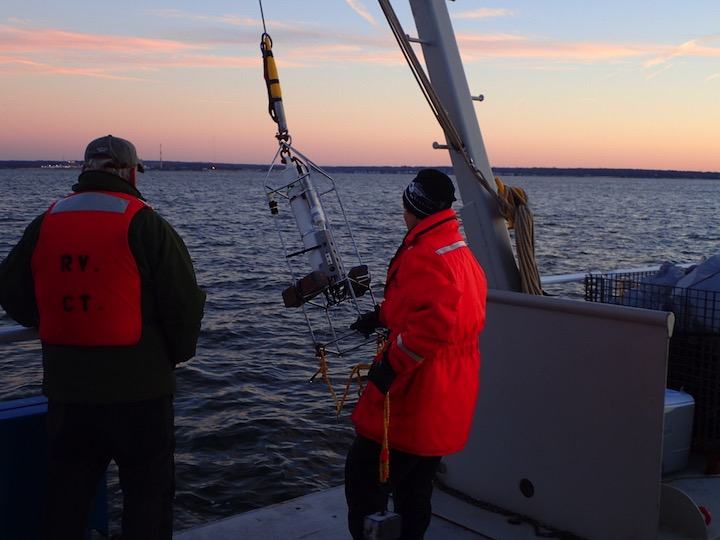 Kay also conducted Conductivity, Temperature and Depth (CTD) samples during the evening
Kay also conducted Conductivity, Temperature and Depth (CTD) samples during the evening The sun sets over Long Island Sound
The sun sets over Long Island Sound









